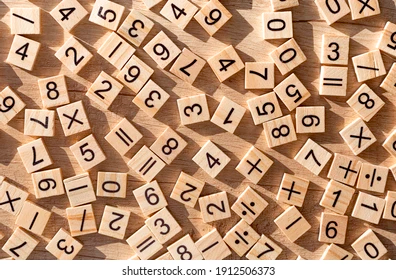Mathematics is a fascinating journey with numerous topics that equip us with essential skills for everyday life. Among them, understanding how to find the lower and upper bound and mastering the concept of long division are paramount, especially in elementary school. Let’s dive deep into these captivating mathematical phenomena!
How to Find Lower and Upper Bound
In mathematical terms, when we talk about the lower and upper bound of a set of numbers, we are referring to the smallest and the largest numbers, respectively, in that set. They play a pivotal role in various math problems, ensuring that we can precisely define ranges and limits.
Organize Your Data
Before you can determine the lower and upper bounds of a set of numbers, it’s crucial to organize the data. This involves listing the numbers in ascending order. Let’s take an example:
- Given Set: 4, 9, 7, 6
- Organized Set: 4, 6, 7, 9
By arranging the numbers in ascending order, you create a clear sequence that makes it easier to identify the lower and upper bounds.
Identify the Lower Bound
The lower bound is simply the smallest number in your organized set. In our example, the lower bound is:
- Lower Bound: 4
This represents the lowest value within the set.
Spot the Upper Bound
Conversely, the upper bound is the largest number in the arranged set. In our example, the upper bound is:
- Upper Bound: 9
The upper bound signifies the highest value within the set.
Applications of Lower and Upper Bound
Understanding how to find lower and upper bounds has practical applications in various real-life scenarios:
- Price Range in Shopping: Imagine you are shopping for a product with multiple price options. By employing the concept of lower and upper bounds, you can quickly determine the price range. The lower bound corresponds to the cheapest option, and the upper bound indicates the most expensive choice. This knowledge allows you to make informed purchasing decisions.
- Sports Statistics: In sports, coaches and analysts frequently use lower and upper bounds to assess performance. For example, in a series of games, they can calculate the lower bound to determine the least number of points scored by the team and the upper bound to identify the most points scored. This statistical analysis helps in evaluating player performance and setting realistic goals.
Tips On How To Find Lower And Upper Bound

Finding lower and upper bounds is a crucial skill in various mathematical and statistical contexts. Whether you’re estimating a range for a data set or solving inequalities, understanding how to determine these bounds is essential. Here are some tips and techniques to help you find lower and upper bounds effectively:
Understand the Concept
Before diving into calculations, ensure you have a clear understanding of what lower and upper bounds represent. A lower bound is the smallest possible value, while an upper bound is the largest possible value within a given context.
Use Inequalities
In many cases, you can find lower and upper bounds using inequalities. For example, if you have a set of data points, you can find the lower bound by identifying the smallest value in the dataset and the upper bound by finding the largest value.
Example:
- Lower Bound (LB) = Min(Data)
- Upper Bound (UB) = Max(Data)
Consider Rounding
When dealing with real-world measurements or approximations, rounding can be useful. Round numbers conservatively to find lower and upper bounds. For instance, if you have a measurement of 6.78 cm with a precision of 0.1 cm, the lower bound could be 6.7 cm, and the upper bound could be 6.8 cm.
Use Interval Notation
Representing bounds in interval notation is common in mathematics. For a lower bound of ‘a’ and an upper bound of ‘b,’ the interval notation is [a, b].
Use Absolute Value
When dealing with absolute values, the lower bound of the absolute value of a number is 0, and the upper bound is the number itself. For |x|, the lower bound is 0, and the upper bound is x.
Account for Uncertainty
In statistics, when estimating a population parameter, consider confidence intervals. A lower bound for a parameter with a 95% confidence level, for example, might involve finding the 2.5th percentile of a sampling distribution.
Practice with Examples
The best way to become proficient at finding lower and upper bounds is through practice. Work on a variety of problems and scenarios to strengthen your skills.
Overcoming Common Challenges with Lower and Upper Bound
Finding the lower and upper bound seems straightforward, but several challenges might arise:
Handling Negative Numbers
One common challenge when determining lower and upper bounds is dealing with negative numbers. Negative numbers are smaller than positive numbers, and this fundamental property can affect your calculations significantly.
To address this challenge effectively, it’s essential to correctly identify the lower and upper bounds, considering the presence of negative values. Here’s a step-by-step approach:
- Identify the Minimum and Maximum Values: Begin by identifying the minimum and maximum values in the dataset, irrespective of their sign.
- Assign Lower and Upper Bounds: The minimum value will be assigned as the lower bound, while the maximum value will serve as the upper bound.
- Comparing Negative and Positive Numbers: Keep in mind that when comparing negative and positive numbers, negative numbers are considered smaller (i.e., more negative) than positive numbers.
Consider the following dataset: [-5, -3, 2, 7, -1, 10]. Applying our approach, we find that the lower bound is -5, and the upper bound is 10. This determination is made by recognizing that -5 is the most negative value, and 10 is the largest value in the dataset.
Decimals and Fractions
Another challenge arises when your dataset contains decimals or fractions. To calculate the lower and upper bounds accurately, you should convert these values to a common format.
To overcome this challenge, follow these steps:
- Convert to a Common Format: Convert all decimals to fractions or vice versa to ensure a uniform format throughout the dataset.
- Identify Minimum and Maximum Values: After converting the values, proceed to identify the minimum and maximum values within the dataset. Treat fractions and decimals as real numbers during this process.
- Assign Bounds: The minimum value will be designated as the lower bound, and the maximum value will serve as the upper bound.
For example, consider the dataset [0.25, 0.5, 1/3, 0.4]. First, convert the fractions to decimals or decimals to fractions to establish consistency. Let’s convert 1/3 to a decimal: 1/3 ≈ 0.3333. Now, identify the minimum and maximum values: the lower bound is 0.25, and the upper bound is 0.5.
Large Data Sets
Handling extensive data sets can be particularly challenging, especially when manually identifying the lower and upper bounds. In such cases, it’s advisable to leverage statistical tools or software to streamline the process.
To efficiently find the lower and upper bounds in large data sets, follow these steps:
- Utilize Statistical Software: Make use of statistical software applications such as Microsoft Excel, Python with libraries like NumPy, or dedicated statistical packages.
- Input the Data: Input the entire data set into the chosen software platform.
- Use Built-In Functions or Code: Utilize built-in functions or custom code to calculate the minimum and maximum values, which will represent the lower and upper bounds, respectively.
Statistical tools and software are equipped to handle large data sets with ease. They not only save you time but also ensure the accuracy of your calculations. Additionally, these tools often provide valuable statistical insights into your data, enhancing the depth of your analysis.
What is Long Division?

Understanding where long division comes from offers a unique perspective on its importance. Historians believe that methods akin to long division have been employed since ancient times, with evidence of its use found in civilizations ranging from the Egyptians to the Chinese. This rich history underscores the timeless value of understanding division deeply.
Key Terminology
To fully grasp long division, it’s pivotal to understand the terminology that frames the process:
- Divisor: This is the number that divides another. Think of it as the number by which you want to divide something.
- Dividend: This represents the number that is being divided. If you were sharing out a collection of items, the dividend would be the total number of items you’re starting with.
- Quotient: After the division is complete, the result you get is the quotient. This tells you how many times the divisor fits into the dividend.
- Remainder: Sometimes, the divisor doesn’t fit perfectly into the dividend. The number that’s left over is called the remainder.
Steps to Mastery in Long Division
| Step | Description |
| Setup | Begin by positioning the divisor outside and the dividend inside the iconic long division symbol. The symbol often resembles an upside-down “L” or a right-sided parenthesis. |
| Divide | Direct your attention to the leftmost number or set of numbers in the dividend. Your goal here is to figure out how many times the divisor can be accommodated within that section without exceeding it. |
| Multiply | After pinpointing the quotient from your division, multiply the divisor with this quotient. The outcome is written beneath the corresponding section of the dividend. |
| Subtract | Deduct the previously obtained product from the segment of the dividend you’re dealing with. This will result in a remainder. |
| Bring Down | If any numbers remain in the dividend, pull the next one down. This new number now merges with the remainder, and this consolidated figure becomes the new dividend for the next cycle of division. |
| Repeat | Persist with this sequence – divide, multiply, subtract, and bring down – until you’ve employed all numbers from the primary dividend. |
Example in Action
To anchor our understanding, consider a divisor of 4 and a dividend of 6528. By meticulously applying each step of the long division method, you’ll find that the quotient is 1632.
Benefits of Mastering Long Division
While it’s tempting in today’s tech-savvy world to rely on calculators for division, understanding long division equips learners with a robust mental framework. It enhances analytical thinking, sharpens attention to detail, and nurtures patience. Moreover, it’s foundational for many advanced mathematical concepts and procedures.
Real-Life Applications
Understanding how to find lower and upper bounds is a versatile skill with numerous practical applications in various real-world scenarios. In this comprehensive guide, we will delve deeper into the practical implications of lower and upper bounds, exploring their importance and utilization in fields such as weather forecasting, budget planning, and quality control in manufacturing.
Weather Forecasting
Meteorologists play a crucial role in informing the public about weather conditions. One of the fundamental aspects of weather forecasting is providing temperature ranges, and this is where the concept of lower and upper bounds becomes indispensable.
- Winter Forecast: When meteorologists predict colder seasons, they establish a lower bound for temperatures. This lower bound indicates the coldest expected temperature, allowing people to prepare for extreme cold. On the other hand, the upper bound provides an upper limit for temperatures, ensuring that people don’t underestimate the potential warmth even during the coldest months.
- Summer Forecast: In the summer, meteorologists set the lower bound to help people be prepared for cooler nights during hot spells. Conversely, they establish an upper bound to inform the public about possible heatwaves or exceptionally warm days. These temperature ranges guide individuals in making decisions about clothing, outdoor activities, and energy consumption.
- Daily Temperature Range: Weather forecasts often include the expected range between the lowest nighttime temperature and the highest daytime temperature. This information aids in outdoor planning, helping individuals decide when to engage in various activities, such as gardening or outdoor sports.
Meteorologists derive these lower and upper bounds through the use of sophisticated statistical models and historical weather data. This approach not only enhances the accuracy of weather predictions but also ensures that the public receives actionable information for planning their daily activities.
Budget Planning
Budget planning is a fundamental aspect of financial management, whether it involves personal finances, project management, or event planning. Understanding lower and upper bounds is crucial for maintaining financial stability and making informed decisions.
- Project Budgeting: Project managers rely on lower bounds to set a minimum cost threshold for a project without compromising its quality or scope. Simultaneously, upper bounds are established to prevent overspending, ensuring that resources are allocated efficiently and the project remains on track.
- Event Planning: When organizing events, such as weddings or conferences, planners use lower bounds to determine the minimum budget required for hosting an event without sacrificing quality. Upper bounds come into play to avoid excessive spending, helping planners stay within their financial limits while delivering a memorable experience.
- Personal Finance: In personal finance, lower bounds allow individuals to budget for essential expenses such as rent, utilities, and groceries. Upper bounds help ensure that one doesn’t overspend on discretionary items, jeopardizing financial goals or savings plans.
By establishing both lower and upper bounds for budgets, individuals and organizations can make informed financial decisions, allocate resources effectively, and avoid unexpected financial setbacks.
Quality Control in Manufacturing
In the manufacturing industry, consistent product quality is paramount. Lower and upper bounds play a critical role in quality control processes, ensuring that products meet predefined specifications and standards.
- Dimensional Accuracy: Manufacturers use lower bounds to define the minimum acceptable measurements for products, guaranteeing that they meet specifications. Simultaneously, upper bounds are established to set tolerable limits on variations, preventing defects caused by excessive deviations from the intended dimensions.
- Material Strength: To ensure product durability and safety, manufacturers specify the minimum required material strength. Upper bounds are introduced to avoid over-engineering, reducing unnecessary material costs without compromising product integrity.
- Production Speed: Manufacturers determine the minimum production speed required for efficient production. Simultaneously, upper bounds are set to ensure safety and prevent equipment damage, as exceeding safe production speeds can lead to accidents and costly downtime.
By employing lower and upper bounds in quality control, manufacturers can consistently produce reliable products, minimize waste, and meet regulatory requirements, ultimately enhancing their competitiveness in the market.
The Historical Significance of Long Division
Long division has been around for centuries and has roots in ancient civilizations:
- The Egyptians utilized a method similar to long division as early as 1800 BC.
- The method we use today has evolved over time and was influenced by mathematicians from various cultures, including the Greeks, Indians, and Arabs.
- Long division has been an essential part of education, emphasizing its significance in understanding larger calculations and enhancing numerical literacy.
Tips and Tricks for Mastering Long Division
Long division can be daunting at first, but these strategies can simplify the process:
- Estimation: Before diving into division, make a quick estimate. It provides a frame of reference and helps in checking the result’s accuracy.
- Practice with Fun Games: There are numerous educational games online that focus on long division, making learning interactive and enjoyable.
- Stay Organized: Always write clearly and keep numbers aligned. It reduces errors and makes the process smoother.
Conclusion
Whether you’re finding the range of a data set by determining how to find the lower and upper bound or breaking down complex numbers with long division, these fundamental math skills are essential building blocks for your mathematical journey. Keep practicing and before you know it, you’ll be a pro at crunching numbers!
FAQs
Why do we need to know how to find the lower and upper bound?
Finding the lower and upper bound helps us understand the range of a set of numbers, which is crucial in statistics, data analysis, and everyday decision-making.
Can long division be used for all numbers?
While long division is a versatile method, there are instances, like when dividing by zero, where it’s not applicable. Always understand the nature of your numbers before applying long division.
Is there a relationship between how to find the lower and upper bound and long division?
Directly, no. But both concepts are foundational in elementary mathematics and play crucial roles in understanding and solving more complex problems as one advances in math studies.
I often mix up the terms. What’s an easy way to remember which is which?
Think of it this way: “Lower” sounds like “low,” which relates to the smallest number. “Upper” is the opposite, referring to the topmost or highest number in the set.
Why do we organize numbers before finding the lower and upper bound?
Organizing numbers helps us quickly identify the extremes. Without organizing, you’d have to inspect each number individually, which can be time-consuming and error-prone, especially with larger sets.


















+ There are no comments
Add yours